Keio’s History told through Monuments: The Great Accomplishments of our Predecessors Carved in Stone
With a history that stretches over 150 years, there are various monuments on Keio’s campuses. In this article, we focus on three—on Mita, Hiyoshi, and Shinanomachi campuses—and revisit the history of Keio University through the events associated with these monuments.
Monument Marking where Yukichi Fukuzawa Passed Away [Mita Campus]
Erected by the “1921 Mita-kai” in Commemoration of Fukuzawa-sensei’s Life
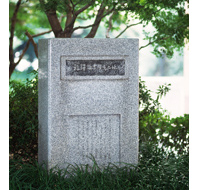
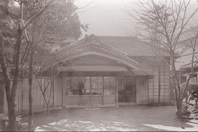
Yukichi Fukuzawa passed away at his home atop of the hill of Mita at the turn of the 20th century on February 3, 1901. The cause of death was a cerebral hemorrhage. He had suffered from a stroke on September 26, 1898, from which he had recovered to the point of being able to lead a normal life, but suffered a second attack. A team of physicians including Shibasaburo Kitasato attended diligently to his treatment, but to no avail. Yukichi Fukuzawa passed away at the age of 66.
To the east of the current Keio University library (new building) on Mita Campus, near the site where Fukuzawa’s house once stood until it was burned down during the Second World War, stands the stone monument marking the site where Yukichi Fukuzawa spent his final days. It was erected by the 1921 Mita-kai commemorating their 50th anniversary of their graduation.
Professor Emeritus Seiichiro Takahashi wrote the epitaph honoring Fukuzawa—who established a school for Western Learning and guided the birth of a new Japan from a feudal agricultural nation to a commercially and industrially united nation—at the very place in which he died. Lilyturfs that were taken from the garden of Ogata Koan’s Tekijuku, where Fukuzawa studied in his younger years, were planted around the monument.
Monument of the Birthplace of Rugby Football in Japan [Hiyoshi Campus]
Rugby First Introduced to Japan by a British Faculty Member at Keio
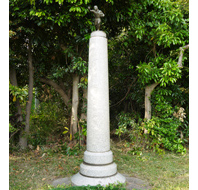
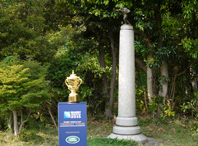
Rugby football, which originated in Britain, was first introduced to Japan in 1899. Edward B. Clarke—a faculty member for English literature at Keio University and had played rugby as a student at Cambridge University—together with fellow Cambridge alumni Ginnosuke Tanaka first taught the sport to Keio University students; and this is said to be the beginning of rugby in Japan.
The stone monument symbolizing the birthplace of rugby football in Japan was built in 1943 in the rugby field at the Hiyoshi Shimoda Ground by the “Kokkou-kai ” (the Keio University Rugby Football Club Alumni Association).
In May, 2014, the Rugby World Cup winner’s trophy, the Webb Ellis Cup, toured the world as part of the build-up to Rugby World Cup 2015 to be held in the UK and was brought to Keio’s rugby field to honor the birthplace of rugby football in Japan. The Keio University Rugby Football Team had a chance to meet former players of the Wales national rugby union team who visited Japan as part of the trophy tour. The next Rugby World Cup after the UK will be held in Japan in 2019.
Monument Commemorating the Site of the School of Medicine Nutrition and Diet Research Institute [Shinanomachi Campus]
Honoring the Leading-Edge Research Center in Dietetic and Nutritional Therapy and Tackling Acute Food Shortage at the Beginning of the Showa Period (1926–89)
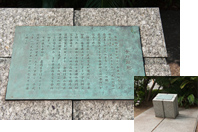
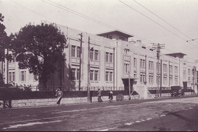
The Nutrition and Diet Research Institute was established at the School of Medicine in 1926 with the objective to solve Japan’s food and population problem at the time as well as conduct research on dietetic and nutritional treatment of patients. Through donations from powerful figures in the financial world such as Takashi Masuda, the research institute was established inside the newly built reinforced concrete building to the north of the main hospital entrance. With Kenta Omori as the head of the institute, research on nutrition promotion, dietetic and nutritional therapy, and vitaminology were conducted, and significant achievements were made in the field of dietetic and nutritional therapy and in the search to identify the cause of beriberi.
In order to put the research results of the institute into practice, the Hospital Diet and Nutrition Department was established inside the Keio University Hospital in 1933, and this led to Japan’s first hospital food service.
Surviving the bombings of the Second World War, the building in which the research institute was located also housed research rooms for basic and clinical education and was commonly known as “Shokken” [abbreviation of Shokuyo Kenkyu-jo—the Nutrition and Diet Research Institute in Japanese].
At the site of the building, which was demolished in 1990 along with the closure of the Nutrition and Diet Research Institute, stands a monument, erected in 1999 to commemorate the School of Medicine Nutrition and Diet Research Institute. A part of the institute’s wall still remains behind the monument.
